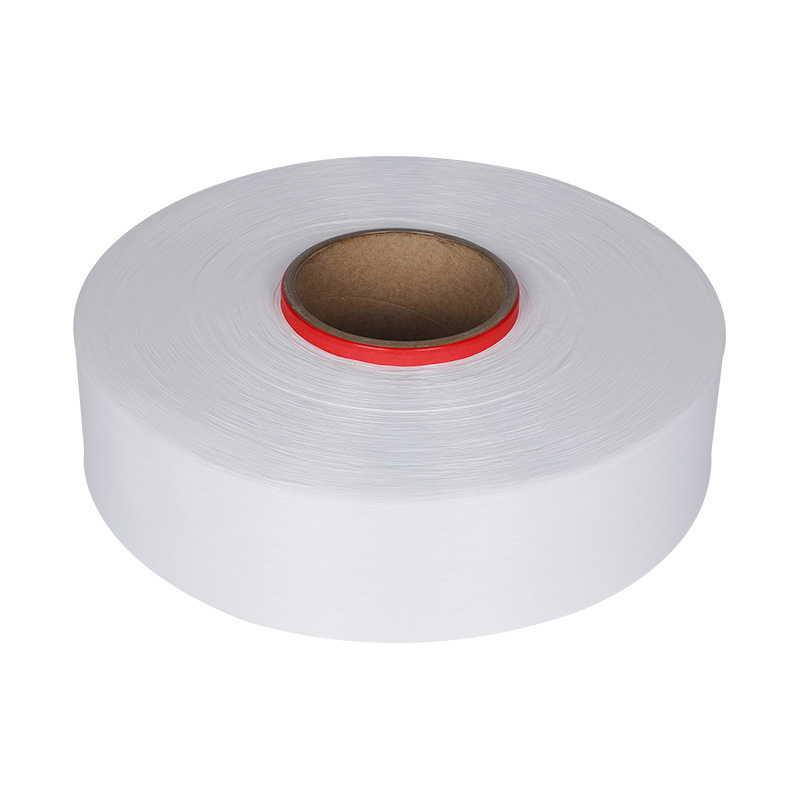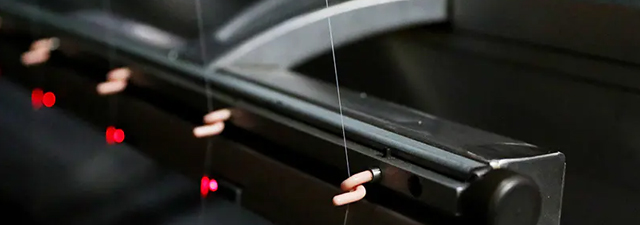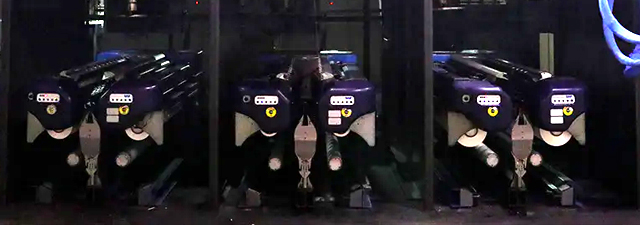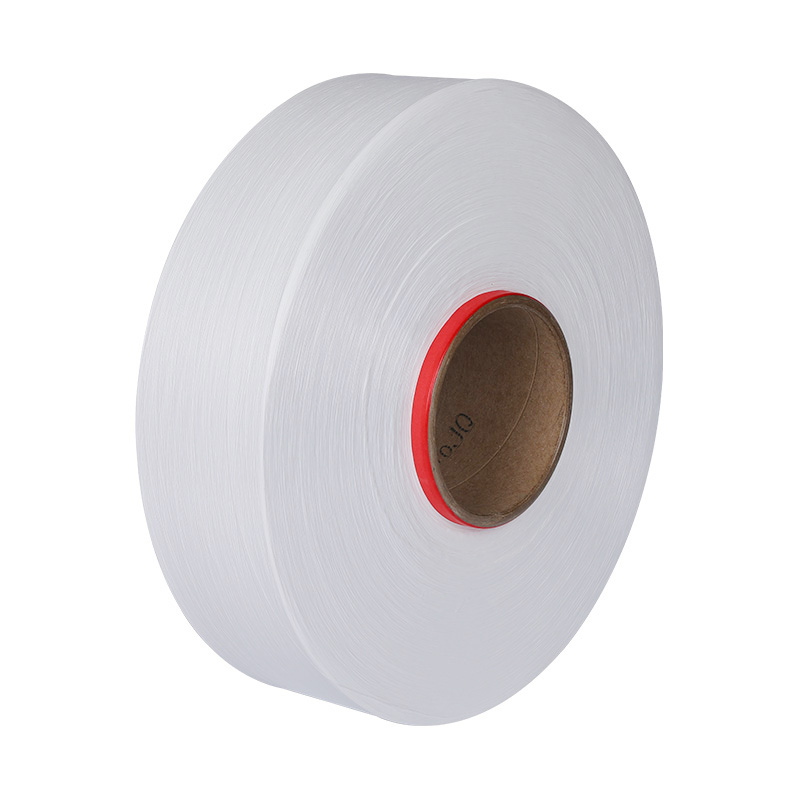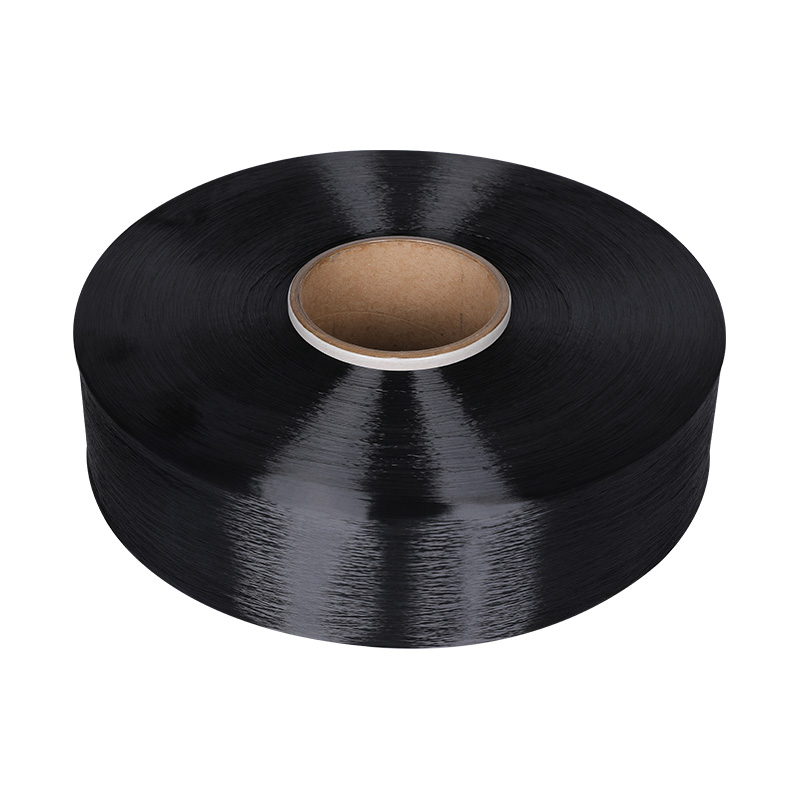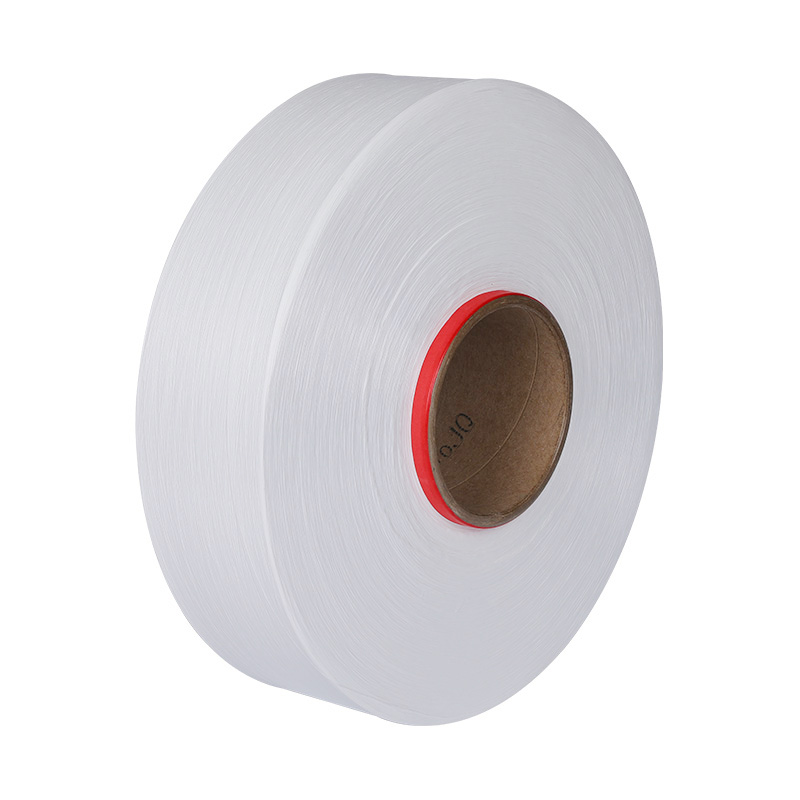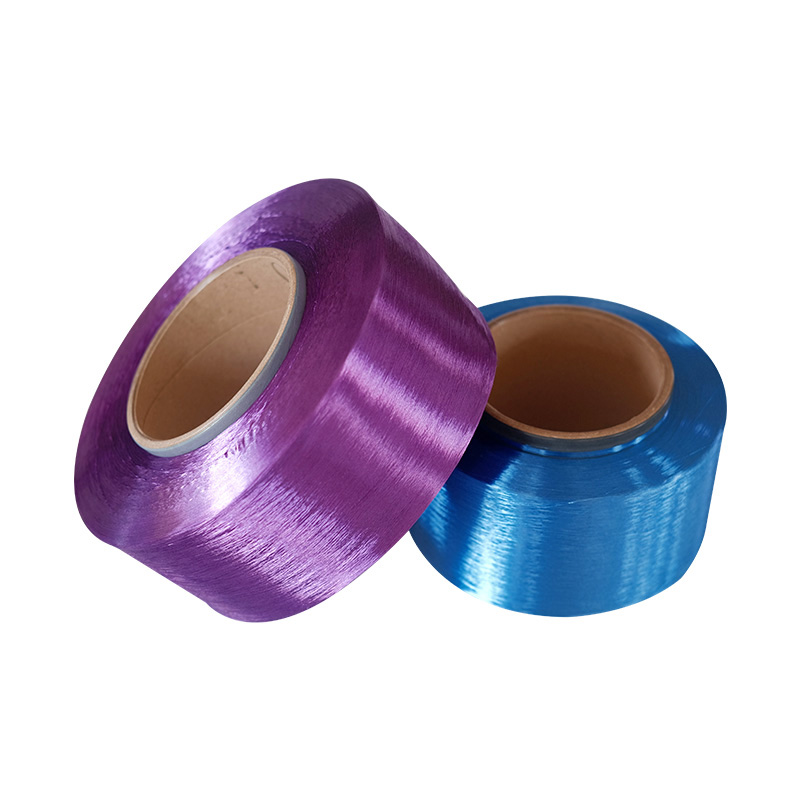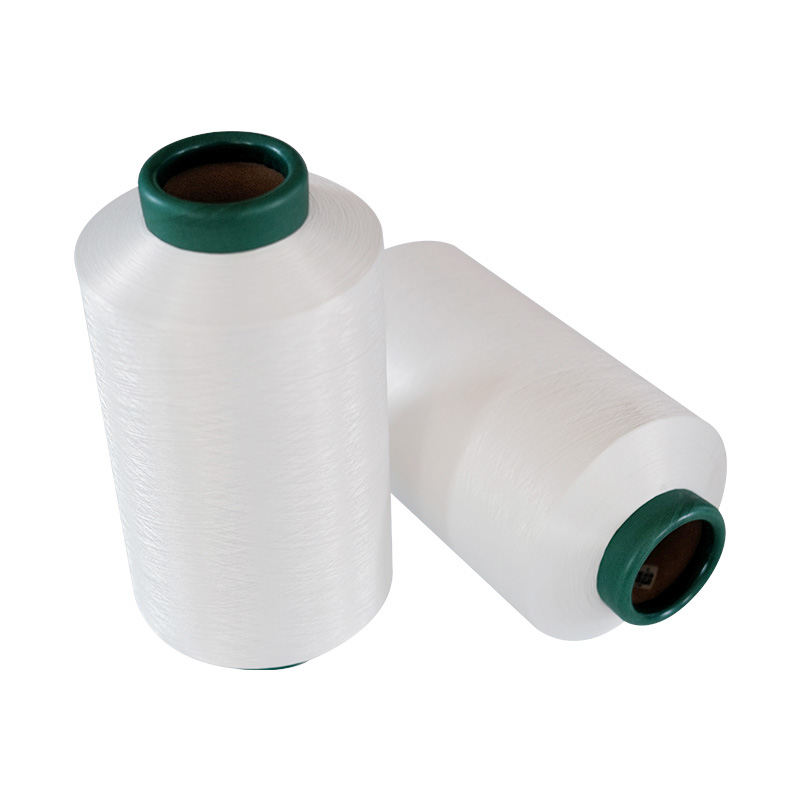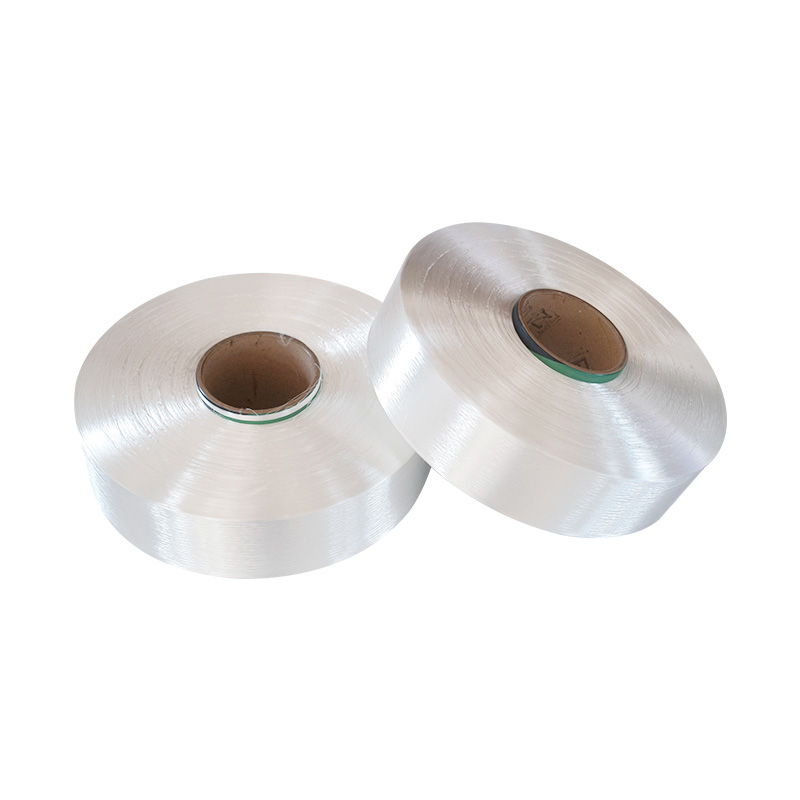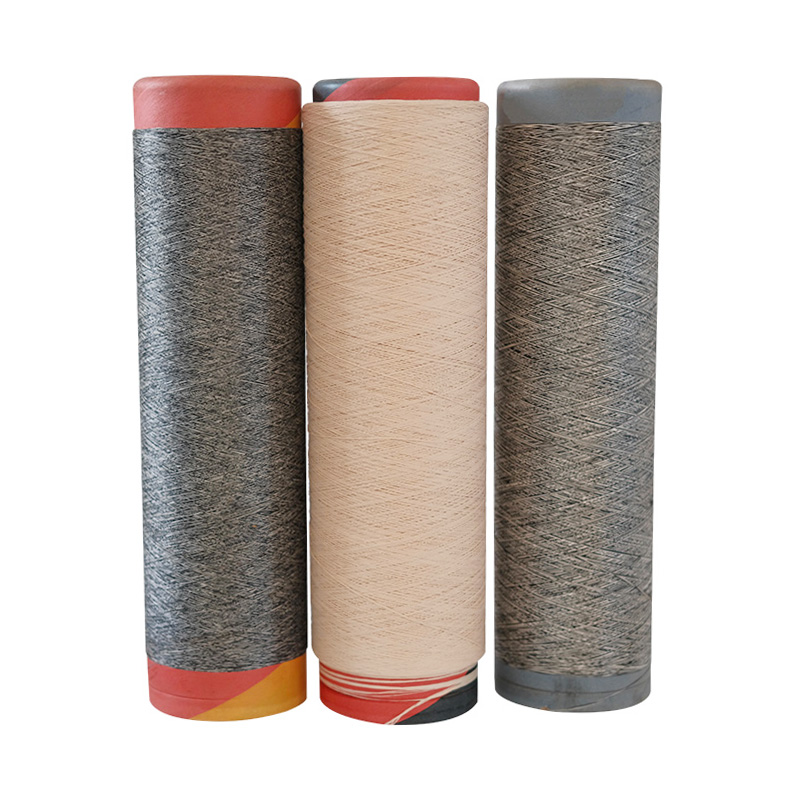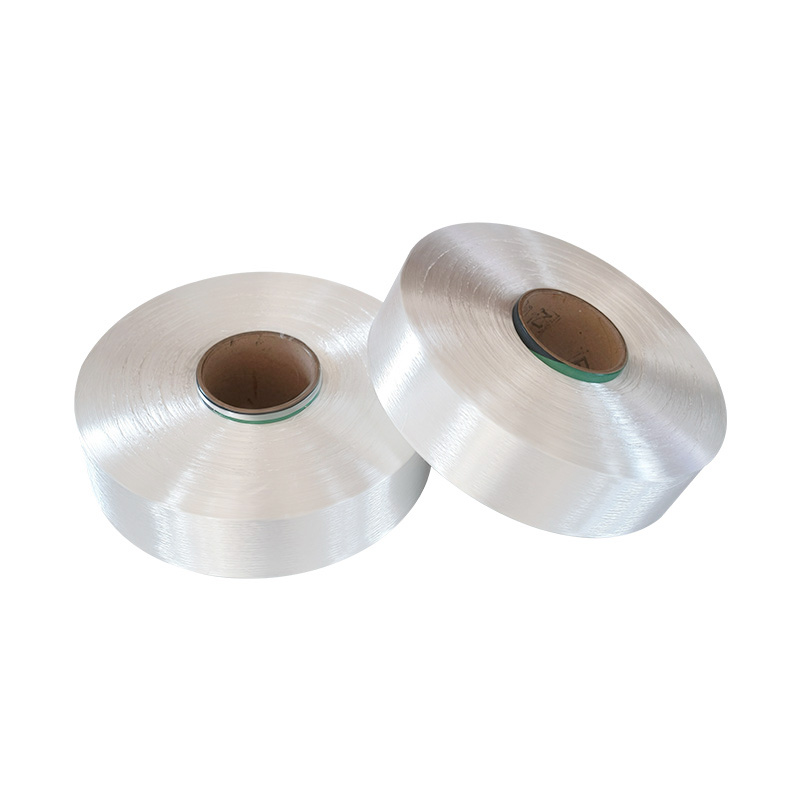I. Introduction: The Ubiquitous Cornerstone of Modern Textiles
Have you ever marveled at the fluid drape of a sleek evening gown, appreciated the rugged durability of a technical outdoor jacket, or considered the robust strength of industrial filter fabrics? While these products serve vastly different purposes, they often share a common, hidden hero at their core: the FDY flat yarn series.
This remarkable synthetic filament is the unsung enabler of both everyday comfort and high-performance applications. Its unique properties make it an indispensable material for innovators and manufacturers across the global textile industry. But what exactly is FDY, and how does this single type of yarn manage to bridge the seemingly distant worlds of high fashion and heavy industry?
This article will unravel the story of FDY flat yarn, exploring its manufacturing process, defining characteristics, and the diverse applications that make it a true foundational element of contemporary manufacturing.
II. Chapter 1: Understanding FDY - The Genesis and Core Advantages of Fully Drawn Yarn
To comprehend the significant role of FDY, one must first understand its fundamental nature and the unique properties bestowed upon it during its creation.
2.1 Decoding the Core Concept: What is FDY Flat Yarn Series?
FDY, an acronym for Fully Drawn Yarn, is a type of synthetic filament that has undergone a complete drawing (stretching) process integrated directly within the spinning line. This immediate and thorough drawing orients the polymer chains almost completely, resulting in a finished yarn with stable molecular structure and definitive physical properties.
The term "flat yarn" precisely describes its physical form: the individual filaments are smooth and straight, lacking the crimp or loops found in textured yarns. This structure is responsible for its characteristically smooth surface, high luster, and low elongation. The "series" denotes the range of variations available, including different deniers, luster levels (bright, semi-dull, full-dull), and cross-sections, all built upon this core FDY technology.
2.2 The Birth of a Filament: How the Manufacturing Process Defines FDY
The superiority of FDY is a direct consequence of its sophisticated manufacturing process, often termed spin-draw winding. The key stages are:
1. Melting & Extrusion: Polymer chips (e.g., PET, PA6) are melted and forced through a spinneret, emerging as fine, liquid streams.
2. Integrated Drawing: Unlike partially oriented yarns (POY), these nascent filaments are immediately stretched between sets of rollers running at different speeds. This critical drawing step aligns the polymer molecules along the filament's axis.
3. Thermosetting: The drawn filaments are heat-set to relax internal stresses and permanently stabilize their new, oriented structure. This "locks in" the yarn's strength and dimensional stability.
4. Winding: The finished FDY is wound onto bobbins as a fully ready-to-use yarn for subsequent textile processes like warping and weaving.
This integrated process is what differentiates FDY and gives it its ready-to-use advantage and consistent, high-quality properties.
2.3 FDY's "Family" and Identification: A Comparative View
FDY is best understood in contrast to other primary synthetic yarns, particularly POY and DTY. The following table outlines the key distinctions that define FDY's place in the manufacturing ecosystem.
| Feature | FDY (Fully Drawn Yarn) | POY (Partially Oriented Yarn) | DTY (Draw Textured Yarn) |
|---|---|---|---|
| Production Process | Integrated spin-draw process. Fully drawn and set on-line. | Spun at high speed but not fully drawn. Unstable structure. | POY is the feedstock. It is drawn and textured (crimped) in a separate offline process. |
| Molecular Orientation | High and stable. Fully oriented. | Partial and unstable. Requires further processing. | High orientation from drawing, but structure is altered by texturing. |
| Key Characteristics | High tensile strength, low elongation, smooth surface, high lustre. | Low to medium strength, high elongation, requires drawing before use. | High bulk, stretch, softness, and moisture wicking. Dull appearance. |
| Form | Flat filaments (Straight and smooth). | Flat filaments (but structure is not final). | Textured filaments (Crimped/looped for bulk). |
| Primary Application | Direct use as warp or weft in weaving/knitting. Ideal for high-speed warping. | Cannot be used directly. Feedstock for drawing or texturing (to make DTY). | Direct use in applications requiring coverage, insulation, or stretch (e.g., apparel, hosiery). |
This comparison clearly shows that FDY occupies a unique position as a premium, ready-to-use industrial yarn, valued for its strength, stability, and processing efficiency rather than softness or bulk.
III. Chapter 2: FDY's Fashion Declaration - The Metamorphosis of Imitation Silk Fabrics
Beyond its technical prowess in industrial applications, FDY flat yarn has carved out a dominant and elegant niche in the world of fashion, primarily as the foundation for high-quality imitation silk fabrics. Its inherent properties make it the ideal candidate for replicating the luxurious appeal of natural silk at a more accessible price point and with enhanced practicality.
3.1 From Fiber to Fabric: Why FDY is the Preferred Choice for "Faux Silk"
The quest to create convincing and beautiful imitation silk hinges on mimicking its most coveted characteristics: a smooth, lustrous surface, a fluid and soft hand feel, and excellent drape. FDY flat yarn excels in delivering all these attributes.
Superb Surface Smoothness: The very nature of being a flat yarn means FDY filaments lack crimp. When woven into fabric, these straight filaments lie parallel to each other, creating an exceptionally smooth surface that effectively reflects light, producing a sharp, continuous shine reminiscent of real silk.
Inherent High Lustre: FDY can be produced in various lustre grades (bright, semi-dull, full-dull). The bright lustre variant is specifically engineered to maximize light reflection, providing that signature silky glow that is so desirable in evening wear and luxury apparel.
Soft and Fluid Drape: The combination of fine denier filaments and a smooth surface results in a fabric that is remarkably soft to the touch and moves with a fluid, graceful drape, closely mirroring the behavior of natural silk.
Furthermore, FDY-based imitation silk offers distinct advantages over its natural counterpart:
| Feature | FDY-based Imitation Silk | Natural Silk |
|---|---|---|
| Cost | Relatively lower and stable. More affordable and accessible. | High and fluctuating. Subject to supply chain variations. |
| Durability & Strength | Excellent. High tensile strength and abrasion resistance. More robust and longer-lasting. | Moderate. Can be delicate and prone to damage from abrasion or sunlight. |
| Care & Maintenance | Easy care. Often machine washable and highly wrinkle-resistant. Easy to maintain. | Delicate care. Typically requires hand washing or dry cleaning. Prone to wrinkling. |
| Consistency | Highly consistent. Uniformity in dye uptake, strength, and appearance is guaranteed by controlled production. | Natural variations. Inconsistencies in thickness, color, and texture are inherent to the natural product. |
3.2 The Application Spectrum: Where FDY Imitation Silk Shines
The versatility of FDY flat yarn allows it to be woven and knitted into a wide array of fabric constructions, each capturing a different aspect of silk's elegance. Key applications include:
Evening and Cocktail Wear: Gowns, dresses, and skirts that benefit from the fabric's luxurious drape and shine.
Lining Fabrics: Its smooth surface reduces friction against clothing and skin, making it an ideal high-end lining material for jackets, coats, and suits.
Blouses and Scarves: Lightweight fabrics made from fine-denier FDY offer beautiful drape and a soft hand feel perfect for blouses and accessories.
Home Textiles: Used in decorative applications like curtains and cushion covers where a luxurious, elegant aesthetic is desired.
In conclusion, FDY flat yarn has democratized luxury by enabling the creation of beautiful, high-performance imitation silk fabrics. It provides designers and consumers with the coveted look and feel of silk, combined with the durability, ease of care, and consistency that modern life demands, truly representing a splendid metamorphosis in textile innovation.
IV. Chapter 3: The Industrial Power of FDY - The Hardcore Applications of High-Tenacity Filament Yarns
While FDY brings elegance to fashion, it demonstrates its true ruggedness and engineering value in the demanding world of industrial textiles. Here, a specific category—high-tenacity FDY (HT FDY)—becomes the critical component, valued not for its lustre but for its exceptional strength, durability, and reliability under stress.
4.1 Defining Performance: The Engineering Behind High-Tenacity FDY
Standard FDY possesses good strength, but high-tenacity FDY is a product of specialized engineering designed to maximize tensile strength and resistance to deformation. This is achieved through:
Premium Polymer Selection: Using higher viscosity-grade polymers as the raw material base.
Optimized Drawing Process: Employing higher draw ratios and precise temperature control during the spin-draw process to achieve a greater degree of polymer chain orientation and crystallization.
Advanced Additives: Incorporating specific additives to enhance properties like thermal stability or UV resistance for specific end-use environments.
The result is a filament yarn with significantly improved key mechanical properties:
Tensile Strength: Drastically increased resistance to breaking under tension.
Initial Modulus: Higher resistance to stretching under load, leading to low elongation.
Abrasion Resistance: Enhanced ability to withstand wearing, rubbing, and fraying.
4.2 Hardcore Applications: Where High-Tenacity FDY Proves Its Mettle
The unique property profile of HT FDY makes it indispensable across a vast spectrum of industrial sectors. The following table contrasts its role in different applications against more conventional materials, highlighting its superior performance.
| Application Sector | Role of High-Tenacity FDY | Technical Requirement | Advantage Over Conventional Materials |
|---|---|---|---|
| Tire Cord Fabrics | Used as the reinforcing skeleton in radial tires for cars, trucks, and aircraft. Provides dimensional stability, strength, and impact resistance. | Ultra-high tensile strength, high thermal stability, excellent adhesion to rubber, low fatigue. | Lighter weight and higher strength-to-weight ratio than steel cord in many cases; excellent fatigue resistance compared to standard yarns. |
| Technical Reinforcements | Used in conveyor belts, hoses, and driving belts (e.g., timing belts) to provide internal reinforcement and prevent elongation under load. | High modulus (low stretch), dynamic fatigue resistance, flexibility. | Superior durability and longer service life under constant stress and friction compared to standard industrial yarns. |
| Coated Fabrics | Serves as the base substrate for fabrics coated with PVC, PU, or rubber for applications like truck tarps, inflatable rafts, and awning. | High tear strength, uniform substrate, resistance to coating chemicals. | Provides a lighter, more flexible, and stronger foundation than traditional materials like heavy canvases, enabling more complex designs. |
| Safety & Protection | Used in the manufacturing of cut-resistant gloves (often combined with other materials like stainless steel fiber) and protective apparel. | High strength, abrasion resistance, and cut resistance. | Offers a superior blend of protection, dexterity, and comfort for the wearer compared to older, stiffer protective materials. |
| Geosynthetics | Used in geogrids and geotextiles for soil stabilization, reinforcement of embankments, and road construction. | High tensile strength, high modulus, resistance to biodegradation and soil chemicals. | Provides a durable, synthetic reinforcement solution that outperforms natural fibers in consistency, longevity, and resistance to environmental decay. |
In these critical applications, failure is not an option. High-tenacity FDY provides the material integrity and engineered performance required for safety, efficiency, and longevity. It is the unseen, high-performance workhorse that reinforces, protects, and enables modern industrial infrastructure and technology, truly embodying the industrial power of advanced synthetic filaments.
V. Chapter 4: The Efficiency Revolution of FDY - Exceptional Performance in Textile Warping
The true value of FDY flat yarn is fully realized at the very first stage of fabric manufacturing: the warping process. Its specific set of properties triggers a significant efficiency revolution in the mill, making it a highly preferred yarn for high-speed, high-quality warp preparation.
5.1 The Crucial First Step: Demands of the Warping Process
Warping is the process where thousands of individual yarn ends are withdrawn from their packages (cones or bobbins) and wound parallel onto a large beam (warp beam) in a precise length and tension. This beam is then mounted on a loom to form the longitudinal threads (warp) of a fabric. This process places specific and critical demands on the yarn:
High Tensile Strength: To withstand the high tension and abrupt stops without breaking.
Minimal Hairiness & Few Faults: To prevent adjacent ends from tangling and to reduce breaks.
Excellent Tension Uniformity: Across all ends to ensure a perfectly uniform warp beam.
High Package Hardness: The yarn packages must be sturdy enough to allow for clean, high-speed unwinding without collapsing.
5.2 Why FDY is the Champion of High-Speed Warping
FDY flat yarn is engineered to meet and exceed these demands, directly addressing the pain points of warping.
Inherent High Strength: As a fully drawn yarn, FDY possesses high tensile strength and a high initial modulus (resistance to stretching), allowing it to endure the high tensions of modern warping machines without elongating or breaking unpredictably.
Superior Surface Quality: The flat and smooth surface of FDY filaments results in extremely low hairiness. This is perhaps its greatest advantage in warping, as it drastically reduces the risk of filaments snagging on adjacent ends or equipment, which causes flaws and machine stops.
Optimal Package Formation: FDY is wound onto stable, hard bobbins with excellent formation. This allows for consistent and effortless unwinding at high speeds, preventing vibrations that can lead to tension variations or breaks.
Elimination of Additional Processing: Unlike POY (Partially Oriented Yarn), which requires a separate, offline drawing step before it can be used, FDY is "ready-to-use." This eliminates an entire processing stage, saving time, energy, and factory floor space, thereby streamlining the supply chain from polymer to loom.
The following table contrasts the impact of using FDY versus a typical alternative (like POY that requires drawing) on the warping process and overall production efficiency:
| Performance Metric | Using FDY (Fully Drawn Yarn) | Using POY (Requires Offline Drawing First) |
|---|---|---|
| Process Simplicity | Integrated process. Directly ready for warping after spinning. | Two-step process. Requires an additional drawing (or draw-warping) step before warping can begin. |
| Warping Speed | Suitable for very high warping speeds (e.g., 1000+ m/min). Smooth surface and high strength allow for efficient high-speed operation. | Limited by the drawing process. The overall production timeline to a warp beam is longer and often more complex. |
| Yarn Breakage Rate | Very Low. High strength and low hairiness minimize breaks during warping, reducing downtime. | Higher risk. The additional drawing process can introduce imperfections or variations that increase break potential later. |
| Warp Beam Quality | Excellent and consistent. High tension uniformity and low hairiness result in a flawless warp beam with minimal defects. | Potential for inconsistencies. Variations from the drawing process can lead to tension differences and a less uniform beam. |
| Production Efficiency | Maximized. Reduces machine stoppages, simplifies logistics, and shortens the time from raw material to loom. | Reduced. The extra processing step adds time, cost, energy consumption, and potential points of failure. |
In essence, the choice of FDY flat yarn is a strategic decision for textile manufacturers aiming for peak operational efficiency. It transforms the warping process from a potential bottleneck into a model of speed, reliability, and quality, truly earning its role in the efficiency revolution of modern weaving and knitting mills.
VI. Chapter 5: A Symphony of Materials - The Unique Allure of Nylon FDY
The versatility of the FDY process is magnificently showcased when applied to different polymer bases. While often associated with polyester, its application to nylon (polyamide) creates a specialized material that combines the superior mechanical properties of nylon with the exceptional processability and performance of the flat yarn structure: Nylon FDY flat yarn. This fusion creates a unique product with a compelling set of attributes for demanding applications.
6.1 A Powerful Fusion: FDY Technology Meets Nylon Polymer
Nylon, as a material, is inherently known for its:
Exceptional Abrasion Resistance: Far superior to polyester and most other fibers.
High Elastic Recovery & Toughness: It can absorb significant energy and return to its original shape.
Excellent Fatigue Resistance: It performs well under repeated bending or loading.
The FDY process enhances these innate qualities and adds critical new ones:
Enhanced Tensile Strength: The high-degree drawing aligns the nylon polymer chains, significantly increasing the yarn's tenacity, making it stronger than conventional nylon yarns.
Superior Dimensional Stability: The thorough drawing and heat-setting minimize subsequent shrinkage, a common challenge with nylon.
Smoother Surface & Better Uniformity: The process results in a very uniform yarn with a smooth finish, improving downstream processing.
The result is a high-performance filament that is both strong and tough, with a smooth, stable structure ideal for precision engineering in textiles.
6.2 Application Spectrum: Where Nylon FDY Outperforms
The unique property profile of Nylon FDY makes it the material of choice for applications where durability, resilience, and reliability are paramount. The following table compares its capabilities against a common alternative in its key application areas.
| Application Area | Role of Nylon FDY | Key Properties Utilized | Comparative Advantage (e.g., vs. Standard Polyester FDY) |
|---|---|---|---|
| High-Performance Apparel | Used in outerwear like ski jackets, hiking pants, and tactical wear, often in woven or rip-stop constructions. | Abrasion resistance, toughness, strength-to-weight ratio, elasticity. | Superior durability and resistance to wear and tear from rough surfaces (e.g., rocks, brush). Offers better flexibility and comfort due to its elasticity. |
| Sportswear & Activewear | Found in swimwear, athletic uniforms, and yoga wear for its strength and recovery. | Elastic recovery, resilience, chlorine resistance (for specific types), dyeability. | Provides excellent shape retention and fit consistency during intense movement. More resistant to degradation from sweat and repeated washing. |
| Hosiery & Socks | Used in premium socks, pantyhose, and tights for its durability and fit. | Abrasion resistance (especially at the heel and toe), elasticity, smoothness. | Significantly extends the lifespan of the product. Offers a more comfortable, snug fit that doesn't bag out as quickly. |
| Technical Fabrics & Composites | Used as a reinforcement scrim in laminated fabrics, airbags, and soft luggage. | High strength, tear resistance, thermal stability, light weight. | Outstanding toughness and energy absorption upon impact (critical for airbags). Provides a lighter, stronger reinforcing layer than many alternatives. |
| Industrial Sewing Threads | Used for sewing heavy-duty products like leather goods, upholstery, and safety gear. | High tensile strength, abrasion resistance against the needle eye and sewing guides, uniformity. | Withstands the high stresses of industrial sewing without breaking. Produces a stronger, more reliable seam that is less prone to failure. |
In conclusion, Nylon FDY flat yarn represents a perfect synergy—a symphony of materials. It leverages the best inherent qualities of nylon and elevates them through the precision and control of the FDY process. It is not merely an alternative to other materials but a specialized solution engineered for end-uses where failure is not an option, and performance under pressure is the primary requirement. Its unique allure lies in this unmatched combination of resilience, strength, and reliability.
VII. Conclusion: FDY Flat Yarn Series – The Fiber Technology Bridging the Present and Future
The journey through the world of FDY flat yarn series reveals a product of remarkable versatility and profound engineering significance. Far from being a simple commodity filament, it has established itself as a foundational material that seamlessly connects diverse industries, from the expressive runways of fashion to the demanding environments of industrial manufacturing.
7.1 A Recap of Core Strengths: The Unifying Thread
As demonstrated, the value proposition of FDY is built upon a powerful triad of inherent properties granted by its integrated spin-draw process:
1. Exceptional Strength and Stability: Its fully oriented structure provides high tensile strength, a high modulus (resistance to stretching), and outstanding dimensional stability, making it a reliable and robust material.
2. Superior Processability: Its smooth, flat surface with minimal hairiness enables unparalleled efficiency in downstream processes, most notably in high-speed warping, reducing downtime and ensuring premium quality warp beams.
3. Versatile Application Potential: This combination of strength and smoothness allows it to serve dual masters: delivering the lustrous aesthetics required for imitation silk fabrics and the rugged durability demanded by high-tenacity industrial applications like tire cord and technical reinforcements.
The fusion of these properties in a single, ready-to-use yarn is what sets FDY apart and makes it an indispensable element in modern textile production.
7.2 The Future is Functional: The Next Evolution of FDY
The evolution of FDY is far from complete. The future lies in moving beyond standard tenacity and lustre to introduce advanced functionalities at the polymer or spinning stage. This positions FDY as a key platform for next-generation smart and sustainable textiles. The following table contrasts the present state with the future potential.
| Aspect | FDY Today (The Present Workhorse) | Functional FDY (The Future Pioneer) |
|---|---|---|
| Primary Focus | Exceptional Mechanical Properties & Processability (Strength, uniformity, smoothness). | Value-Added Performance & Sustainability (Intelligent functions, eco-conscious production). |
| Key Properties | High tenacity, low elongation, high lustre, uniformity. | Antimicrobial, Moisture-Wicking, Flame Retardancy, UV Resistance, Conductivity, Recycled Content. |
| Defining Application | Standard imitation silk, linings, tire cord, technical fabrics. | Advanced Medical Textiles, Smart Wearables, Protective Military Gear, High-Performance Sportswear, Sustainable Fashion. |
| Value Proposition | Reliability, Efficiency, and Cost-Effectiveness in manufacturing. | Innovation, Safety, Sustainability, and Enhanced User Experience in the final product. |
7.3 Concluding Perspective: A Lasting Foundation
The FDY flat yarn series is more than just a type of yarn; it is a testament to textile innovation. It has successfully bridged the gap between aesthetic appeal and industrial strength, proving that one material can indeed serve a multitude of purposes without compromise.
As we look forward, FDY's role is set to expand even further. Its well-defined structure and manufacturing flexibility make it an ideal base for embedding the next wave of functional and sustainable properties. It will continue to be the critical thread connecting present-day manufacturing excellence with the future's intelligent and environmentally conscious material solutions, solidifying its status as a cornerstone of global textile technology for years to come.
FAQ
1. What is the main difference between FDY and other common yarns like POY and DTY?
FDY (Fully Drawn Yarn) is characterized by its completed drawing process during spinning, resulting in a stable molecular structure, high strength, low elongation, and a smooth surface. It is ready for direct use in weaving or knitting. In contrast, POY (Partially Oriented Yarn) requires further drawing or texturing before use, and DTY (Draw Textured Yarn) is made by texturing POY to give it stretch and bulk. Essentially, FDY offers superior stability and processing efficiency for high-quality fabrics and industrial applications.
Zhejiang Yuwei Chemical Fiber Co., Ltd. leverages its advanced production technology to manufacture a wide range of FDY products with consistent quality, ensuring optimal performance for both textile and industrial uses.
2. Why is FDY particularly suitable for high-speed warping processes?
FDY’s smooth surface, high tensile strength, and minimal hairiness make it ideal for high-speed warping. Its uniform tension and low breakage rate reduce machine downtime, enhance efficiency, and ensure the production of high-quality warp beams. This is critical for modern textile manufacturing where precision and speed are essential.
At Zhejiang Yuwei Chemical Fiber Co., Ltd., we produce FDY yarns with these exact properties, supporting our clients in achieving greater productivity and cost-effectiveness in their operations.
3. Can FDY be used for functional or high-performance applications?
Absolutely. FDY can be engineered with specialized properties such as high tenacity, antimicrobial features, UV resistance, and flame retardancy. This makes it suitable for demanding applications including industrial safety gear, medical textiles, sportswear, and automotive fabrics.
Zhejiang Yuwei Chemical Fiber Co., Ltd., established in 2005, is a high-tech enterprise dedicated to the research, development, and production of differentiated and functional fiber products. With advanced equipment, a robust R&D team, and a strict quality management system, we provide innovative and high-performance FDY solutions tailored to meet the evolving needs of global customers.
 +86-0571-82795522
+86-0571-82795522 
 LANGUAGE
LANGUAGE 
 English
English